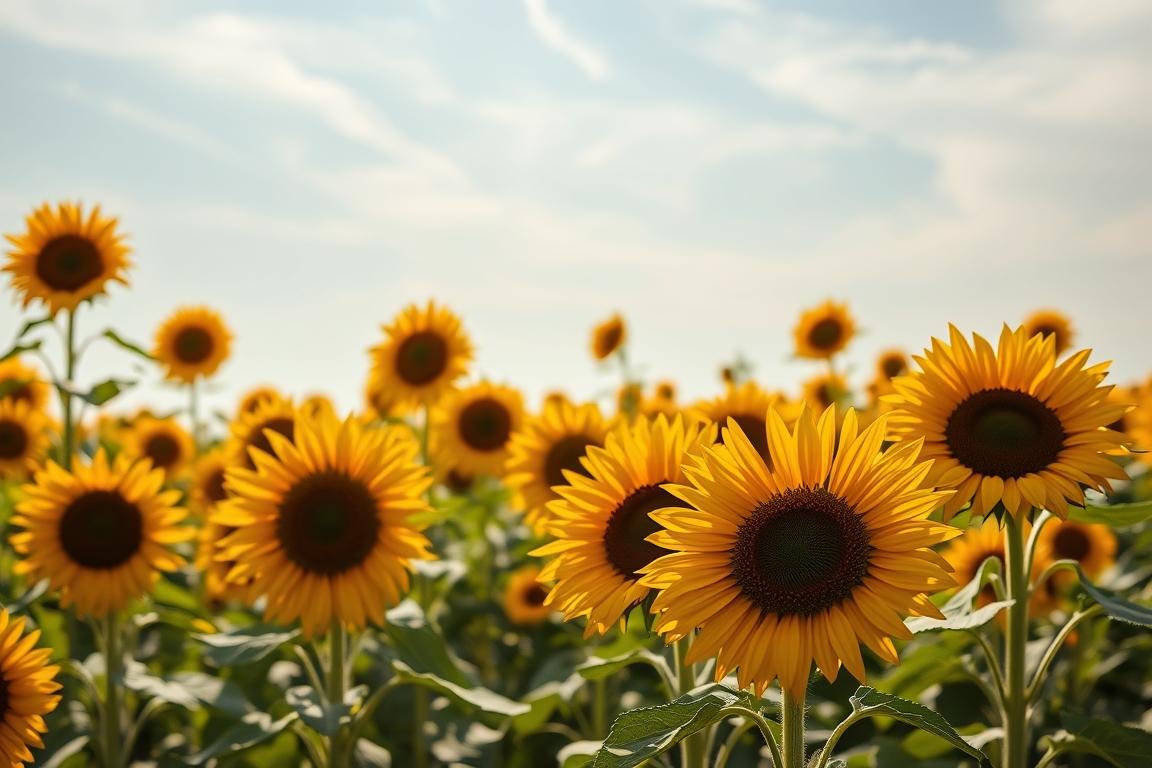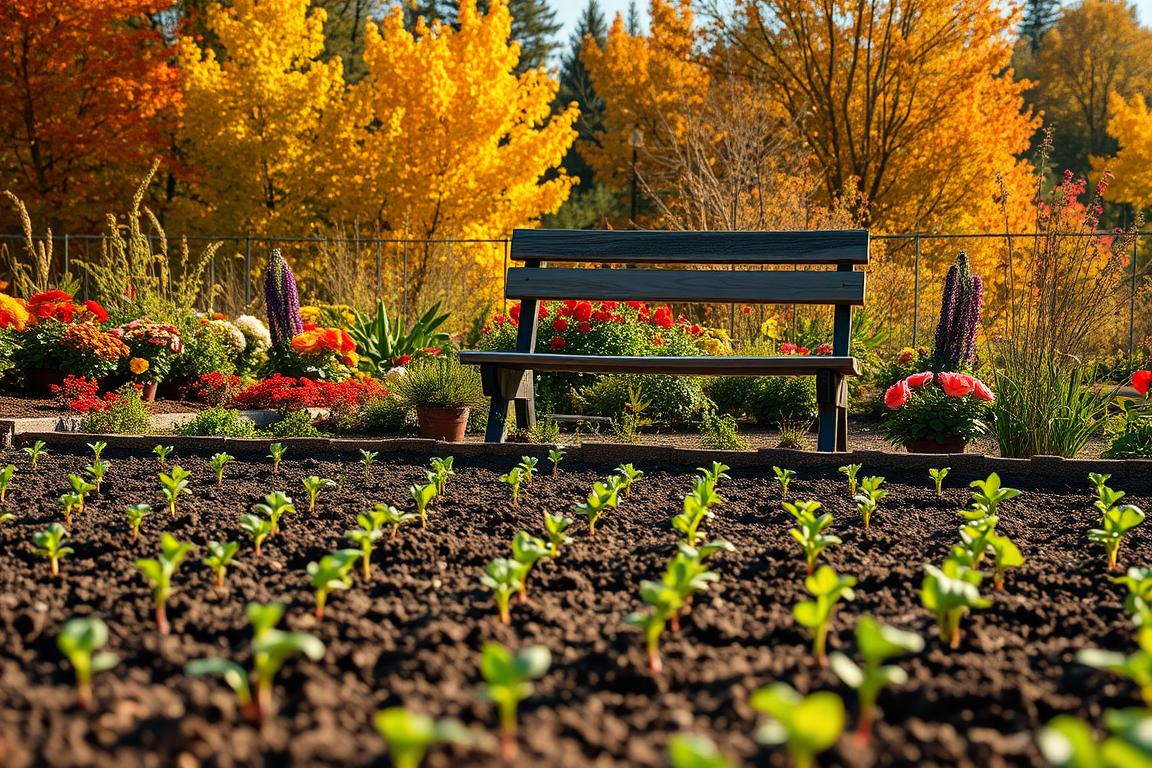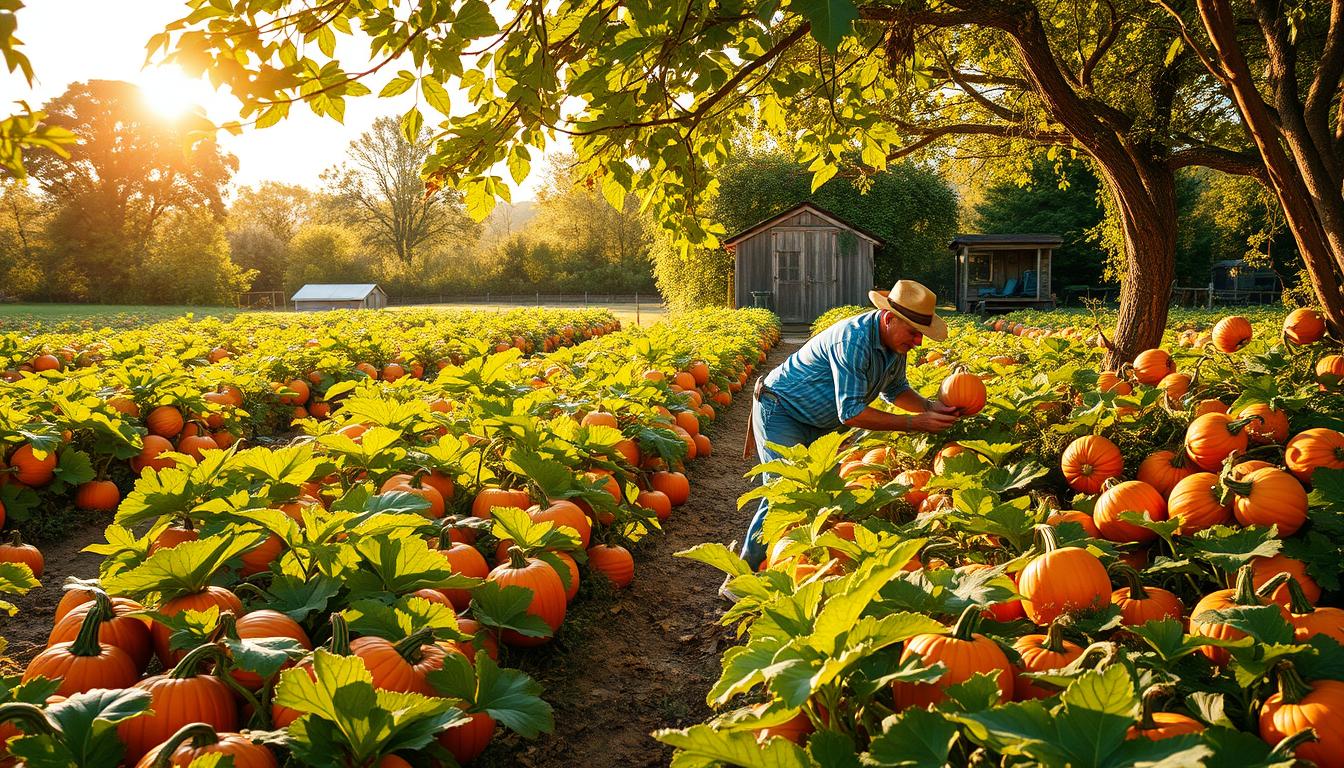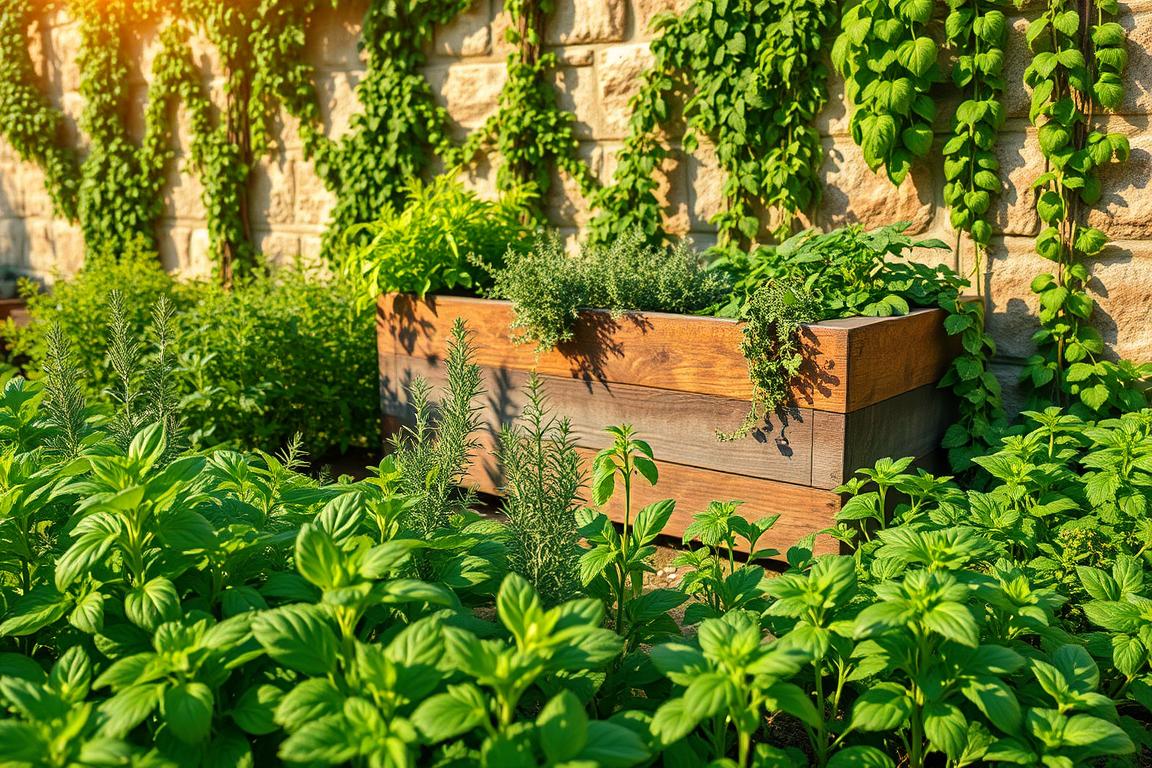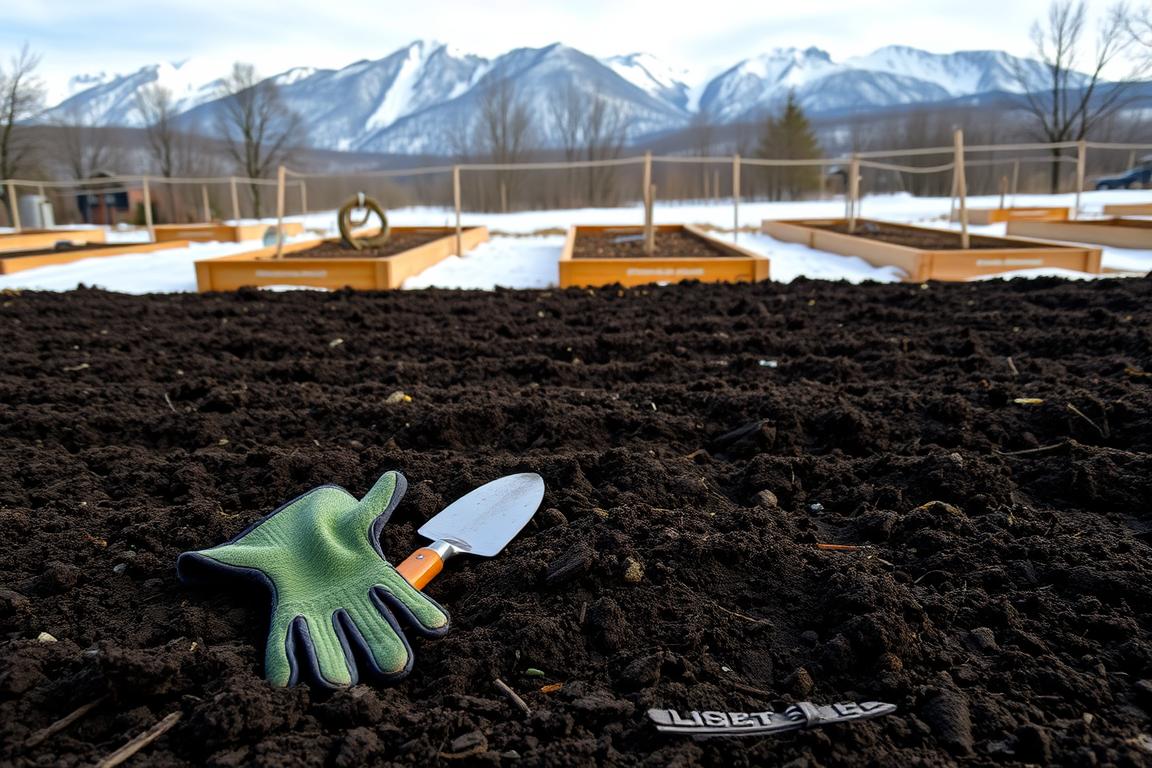I’ve always been drawn to sunflowers. Their bright yellow petals and tall stems make them symbols of happiness and positivity. These flowers have captivated people for centuries, not just for their beauty but also for their many benefits and meanings.
Exploring sunflowers reveals their connection to warmth, happiness, and loyalty. They are more than just pretty flowers. They hold a rich history and play a key role in our ecosystem.
In this article, we’ll look at the many sides of yellow flowers. We’ll cover their history, how they’re grown, and their use in decoration. We’ll also explore the sunflower symbolism that makes them special.
The Golden History of Sunflowers
Sunflowers have been around for over 4,500 years. They are a big part of human culture. They started in North America, where Native Americans first grew them.
Ancient Origins in the Americas
Sunflowers were more than just food for Native Americans. They were also important in their culture and spiritual practices. People used every part of the plant, showing how resourceful they were.
Native American Cultivation and Uses
Native Americans grew sunflowers for many things. They used them for food, cosmetics, and dyes. Sunflowers were very useful to them.
Archaeological Evidence
Archaeological findings show sunflowers were key in Native American cultures. They found evidence of sunflower farming that goes back thousands of years.
Journey to Global Popularity
When European explorers came to the New World, they found sunflowers. They took them back to Europe, where they became loved as garden flowers.
Introduction to Europe
In Europe, sunflowers were grown for their beauty. People loved their big, bright yellow flowers.
Modern Cultivation Expansion
Now, sunflowers are grown all over the world. Countries grow them for their seeds and oil. This shows how adaptable and valuable they are.
Fascinating Varieties of Sunflowers
There are over 70 types of sunflowers, ranging from tall giants to small dwarfs. This variety lets gardeners pick the perfect sunflowers for their space. Whether you want a big garden statement or a small balcony decoration, there’s a sunflower for you.
Classic Single-Stem Giants
Classic single-stem sunflowers stand tall and have big blooms. They’re great for making a bold statement in your garden.
Mammoth and Titan Varieties
The Mammoth and Titan sunflowers are the tallest, growing over 12 feet. Their blooms can be up to 2 feet wide, adding a striking touch to any garden.
Russian Mammoth Characteristics
The Russian Mammoth sunflower is famous for its size and seeds. It’s a favorite among gardeners for its tall height and lots of seeds.
Branching and Multi-Bloom Varieties
Branching sunflowers have lots of blooms, making them perfect for cutting gardens. Types like Autumn Beauty and Soraya give you many flowers per stem, great for fresh bouquets.
Autumn Beauty and Soraya Types
Autumn Beauty sunflowers have bright colors, while Soraya has yellow and red petals. Both add vibrant colors to your garden.
Ideal Uses in Gardens
These varieties are great for cutting gardens. They keep giving you fresh flowers all season long.
Dwarf and Container-Friendly Sunflowers
Dwarf sunflowers are perfect for small spaces. Types like Teddy Bear and Sunspot grow big blooms but stay short.
Teddy Bear and Sunspot Varieties
Teddy Bear sunflowers have soft petals, and Sunspot blooms are bright yellow. Both are great for containers or small gardens.
Growing in Limited Spaces
Dwarf sunflowers let anyone grow sunflowers, even in tiny spaces. They’re perfect for balconies, patios, or small gardens.
Growing Sunflowers in Your Garden
To grow sunflowers well, knowing what they need is key. With the right steps, anyone can grow these stunning flowers.
Selecting the Perfect Location
Sunflowers need the right spot to thrive. First, pick a place with enough sunlight and good soil.
Sunlight Requirements
Sunflowers need lots of sun. Choose a spot that gets at least 6 hours of direct sunlight every day.
Soil Preparation
The soil should drain well and be rich in nutrients. To improve it, add compost or manure.
Planting Tips for Success
Right planting is key for sunflowers to grow well. This includes spacing seeds right and planting them deep enough.
Seed Spacing and Depth
Plant sunflower seeds 6 inches apart and 1 inch deep. This helps them grow and get air.
Best Planting Times
In most areas, plant sunflowers in late spring after the last frost. This is when they grow best.
Seasonal Care Guide
Sunflowers need care all season. This includes looking after them in spring and summer, and harvesting in fall.
Spring and Summer Maintenance
In spring and summer, keep the soil moist and control weeds. This helps your sunflowers grow strong.
Fall Harvest Techniques
In fall, sunflowers are ready when the back of the flower head turns light brown. Cut the stem a few inches from the flower head when you harvest.
Sunflower Care and Maintenance
Proper care and maintenance of sunflowers are key to their health and yield. You’ll learn how tailored care boosts these radiant blooms.
Watering and Fertilization Needs
Sunflowers need specific watering and fertilization at different growth stages. Knowing these needs is vital for their growth.
Moisture Requirements by Growth Stage
During germination, sunflowers need steady moisture. As they grow, they need less water but deeper watering to grow roots.
Organic vs. Chemical Fertilizers
Choosing between organic and chemical fertilizers depends on your gardening style and soil. Organic fertilizers feed the soil slowly, while chemical fertilizers provide quick nutrients.
Pest and Disease Management
Sunflowers face pests and diseases, so regular checks are crucial. Early detection leads to quick action.
Common Sunflower Pests
Aphids, whiteflies, and spider mites are pests that can harm sunflowers. Regular checks help catch these pests early.
Natural Remedies and Prevention
Neem oil and beneficial insects can control pests. Crop rotation and keeping the area clean also prevent problems.
Supporting Tall Varieties
Tall sunflowers need support to avoid falling over. This ensures they grow upright and bloom well.
Staking Methods
Staking keeps the stem upright. It’s effective but must be done carefully to avoid stem damage.
Wind Protection Strategies
Planting sunflowers in a sheltered spot or creating a windbreak protects them from wind. This is crucial for tall varieties.
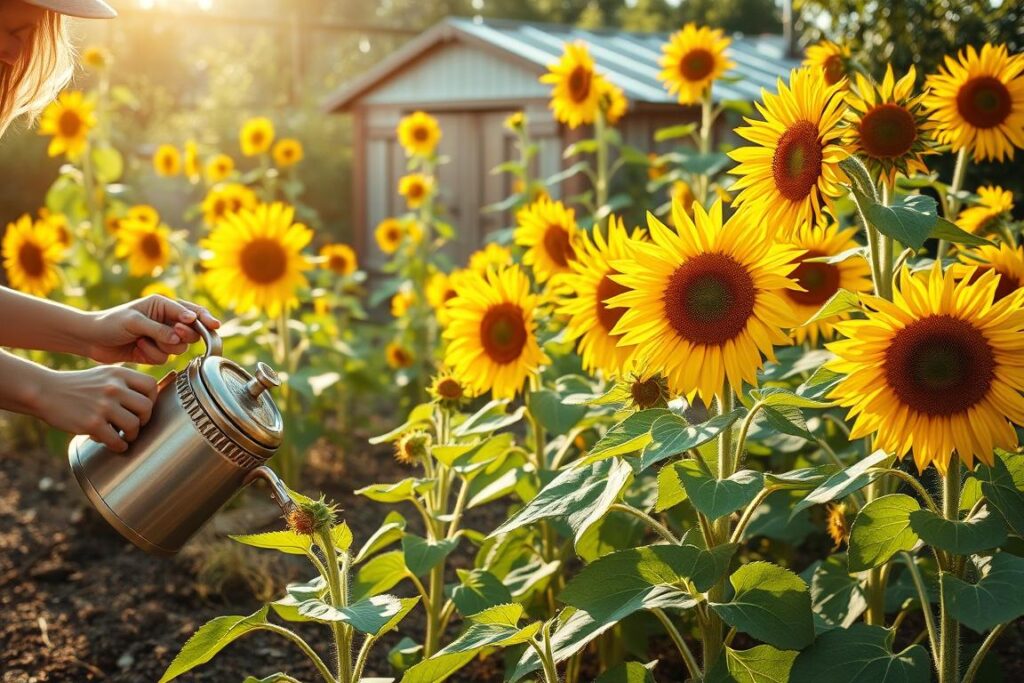
| Care Aspect | Description | Benefits |
|---|---|---|
| Watering | Consistent moisture during germination, less frequent deep watering as they grow | Promotes healthy root development |
| Fertilization | Organic or chemical fertilizers based on soil nutrient content | Provides necessary nutrients for growth |
| Pest Management | Regular monitoring, natural remedies, and preventive measures | Reduces pest damage, promotes healthy plants |
| Support for Tall Varieties | Staking and wind protection strategies | Prevents lodging, ensures upright growth |
The Many Benefits of Sunflowers
Sunflowers are packed with benefits, from being a great food source to helping the environment. They are not just pretty to look at. They also have many uses.
Nutritional Value of Sunflower Seeds
Sunflower seeds are a healthy snack. They are full of protein, good fats, and important vitamins and minerals.
Protein and Healthy Fats
Sunflower seeds are a top choice for a healthy snack. They have about 6 grams of protein per ounce. This is great for building and repairing muscles.
Vitamins and Minerals
These seeds are also full of vitamins and minerals. They have vitamin E, selenium, and magnesium. Vitamin E helps protect cells from harm.
Sunflower Oil and Its Uses
Sunflower oil is a valuable product from sunflowers. It has many uses in cooking and more.
Culinary Applications
Sunflower oil is great for cooking. It has a high smoke point and a mild taste. It’s perfect for frying, baking, and making salad dressings.
Cosmetic and Medicinal Benefits
Sunflower oil is also used in cosmetics and medicine. It’s moisturizing and has anti-inflammatory properties.
Environmental Advantages
Sunflowers have many environmental benefits. They are a sustainable crop choice.
Pollinator Support
Sunflowers are a rich source of nectar and pollen. They support pollinators like bees and butterflies.
Soil Remediation Properties
Sunflowers have deep roots. These roots help clean the soil by removing toxins and improving its structure.
| Benefit | Description |
|---|---|
| Nutritional Value | Rich in protein, healthy fats, vitamins, and minerals |
| Culinary Uses | Ideal for frying, baking, and salad dressings |
| Environmental Benefits | Supports pollinators and aids in soil remediation |
Decorative Uses of Sunflowers
Sunflowers are loved for their bright and cheerful look. They add warmth and happiness to any place. This makes them perfect for many decorative uses.
Creating Stunning Sunflower Bouquets
Making beautiful sunflower bouquets is more than just putting sunflowers in a vase. It’s about creating a stunning arrangement that shows off their beauty.
Pairing with Complementary Flowers
To make a stunning bouquet, pair sunflowers with flowers like baby’s breath or daisies. This adds texture and depth, making the arrangement more interesting.
Extending Vase Life
To keep your sunflower bouquets fresh, trim the stems often and change the water. This simple care can make your arrangement last longer, so you can enjoy it for more time.
Sunflower-Themed Home Décor
Sunflowers are not just for bouquets. They can also be used in home décor. From sunflower decorations on walls to seasonal decorations, they can brighten any room.
Seasonal Decorations
Sunflowers are great for seasonal decorations, best in summer and early fall. They can be used in wreaths, centerpieces, and more.
DIY Sunflower Crafts
For craft lovers, sunflowers are a treasure trove of ideas. You can make sunflower-themed crafts or create arrangements. There are many ways to use sunflowers in your home décor.
Experiencing Sunflower Fields
Walking through sunflower fields is very calming. The bright yellow blooms make a beautiful scene. Many farms in the US are great for visiting and taking photos.
Best Sunflower Farms to Visit in the US
The US has many sunflower farms that people love to visit. You can find great spots in the Northeast, Midwest, South, and West.
Northeast and Midwest Destinations
In the Northeast, Van Vliet’s Farm Market in New Jersey has beautiful sunflowers. The Midwest is famous for its sunflower farms, like Grunseth Farms in Minnesota.
Southern and Western Sunflower Trails
In the South, the Dixon Gallery and Gardens in Tennessee has amazing sunflowers. Out West, Gilroy Gardens in California offers a special sunflower experience.
Photography Tips for Sunflower Fields
Getting great photos of sunflower fields takes some skill. Timing and how you set up your shot are crucial.
Golden Hour Shooting
Photographing during the golden hour, just before sunset, adds warmth to your photos. It makes the sunflowers look even more beautiful.
Composition Techniques
Using techniques like leading lines and framing can make your photos stand out. Try different angles and views to add depth.
Conclusion: The Enduring Charm of Sunflowers
Sunflowers are more than just beautiful flowers. They have a special charm that comes from their looks, health benefits, and role in nature. From their beginnings in the Americas to today, sunflowers keep winning hearts and minds.
Sunflowers are loved in gardens, fields, and as decorations. They stand for joy, happiness, and long life. Enjoying sunflowers also means getting their health perks and helping the environment.
Sunflowers have a timeless charm that touches people everywhere. By growing and loving these flowers, we celebrate their importance in our world. Their lasting charm shows how much sunflowers mean to us and our connection to nature.


